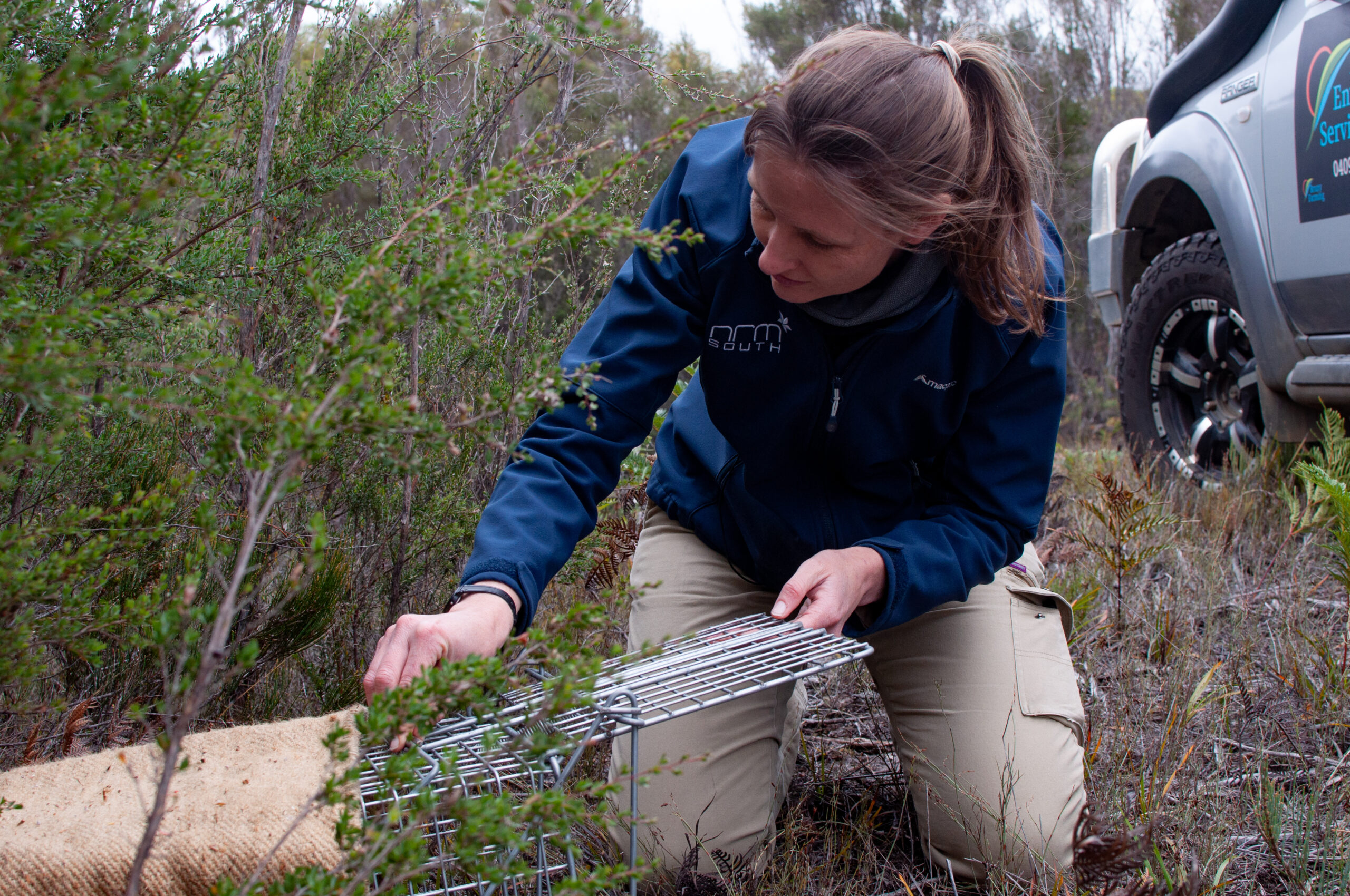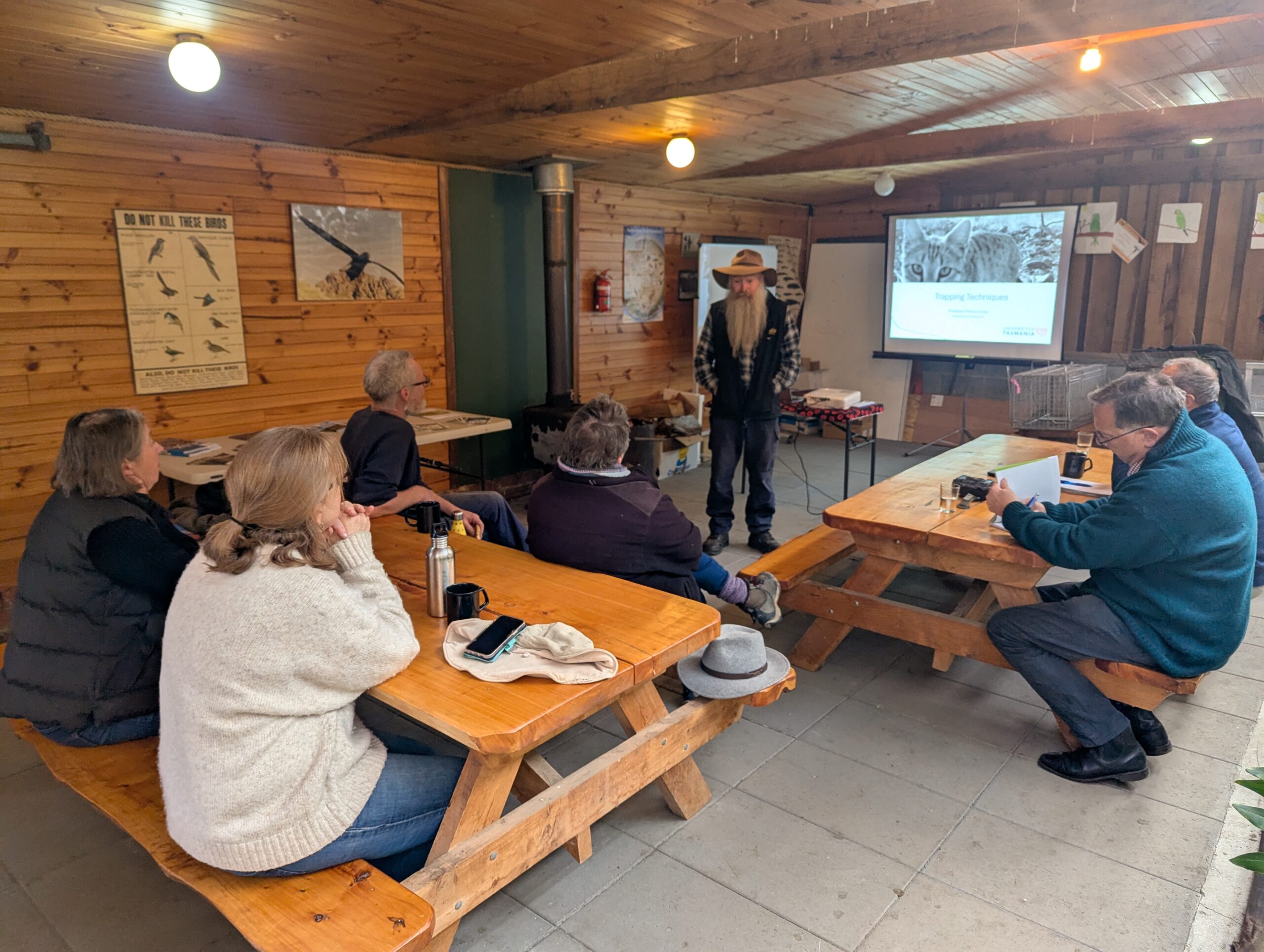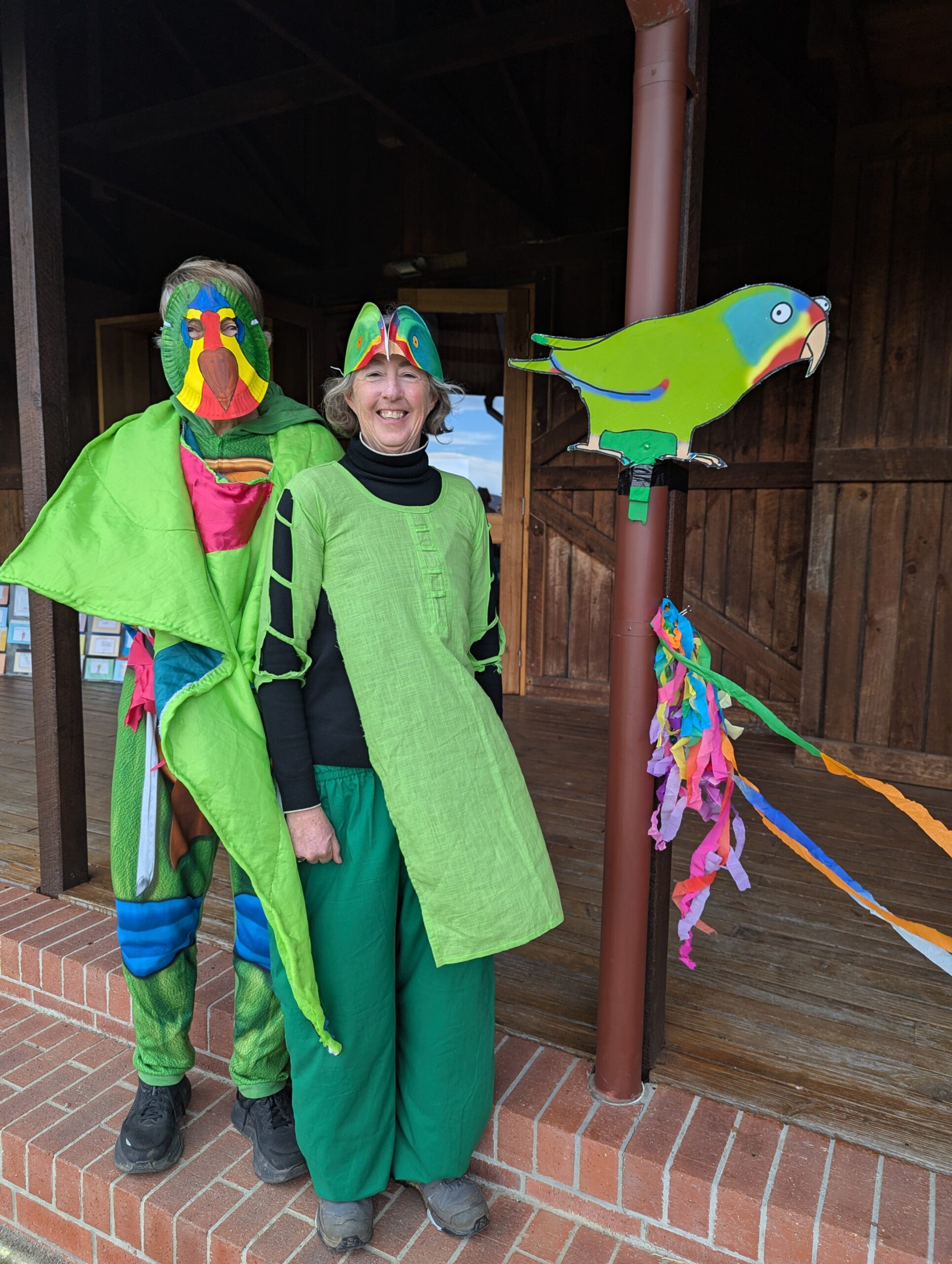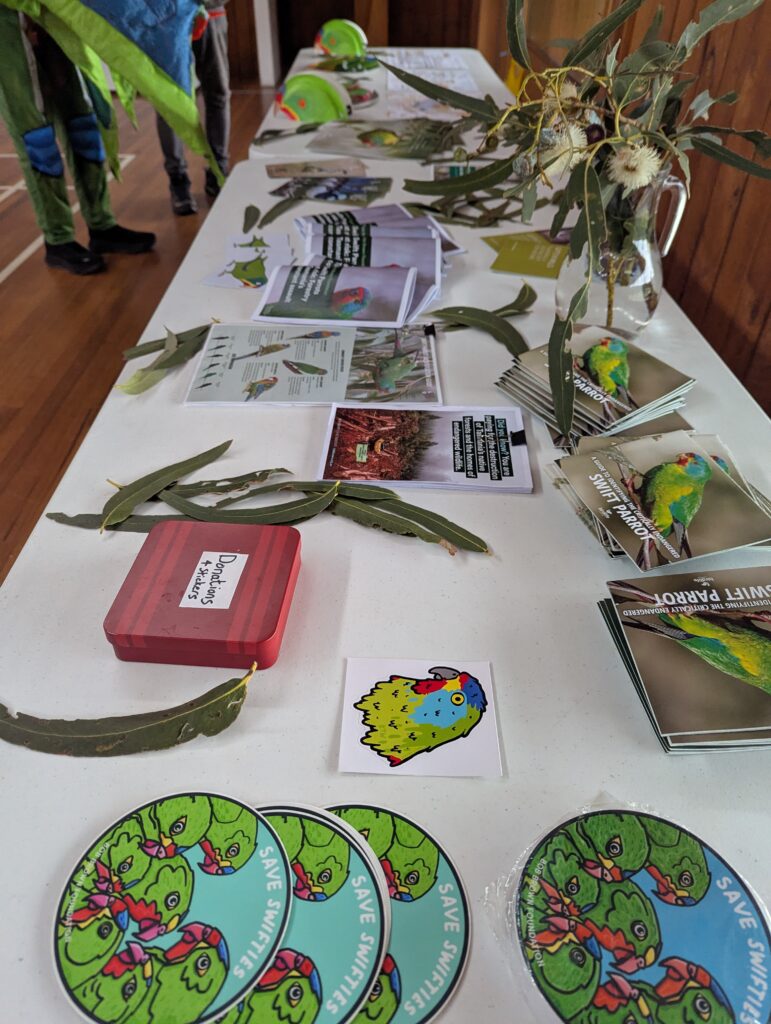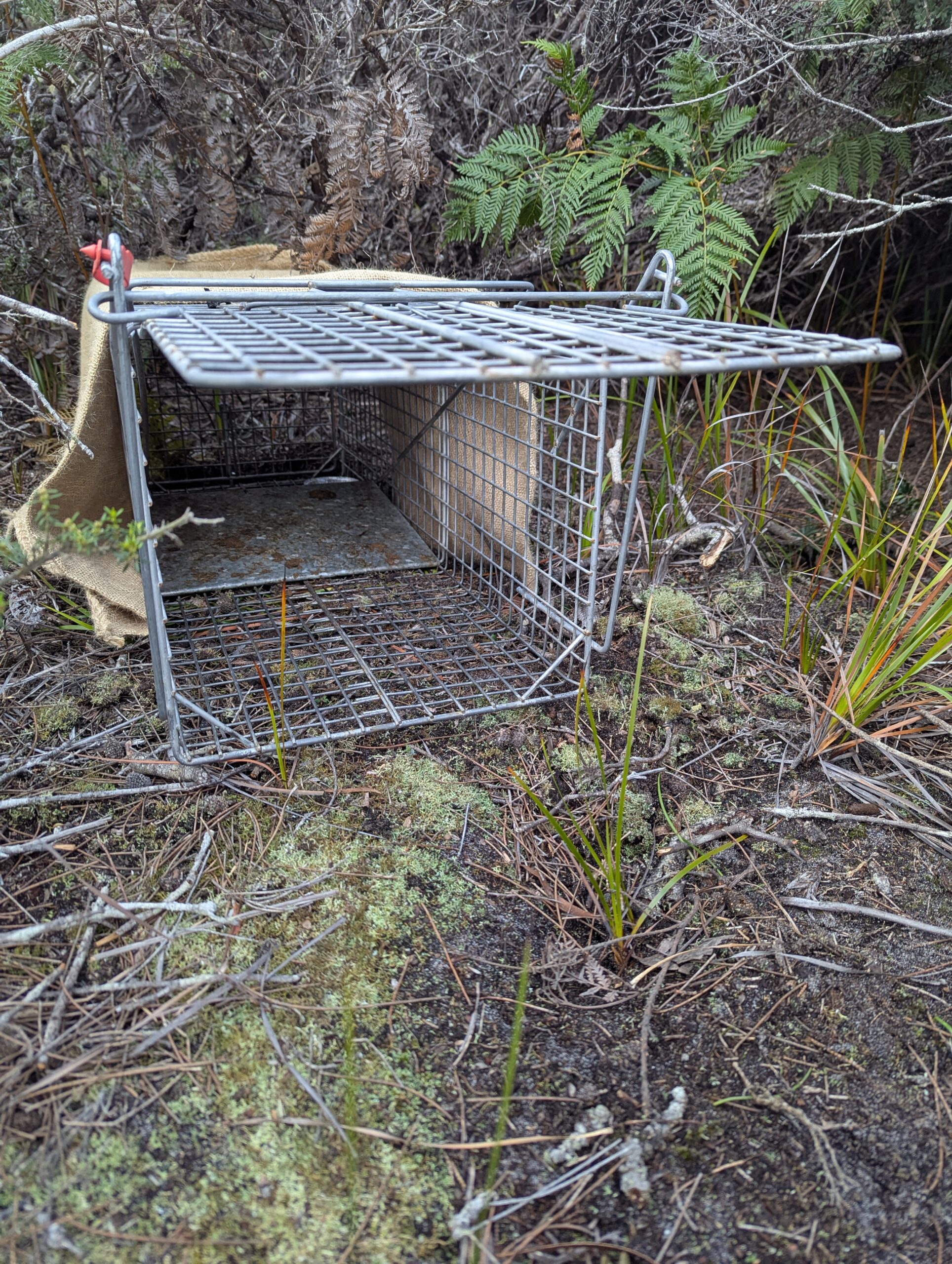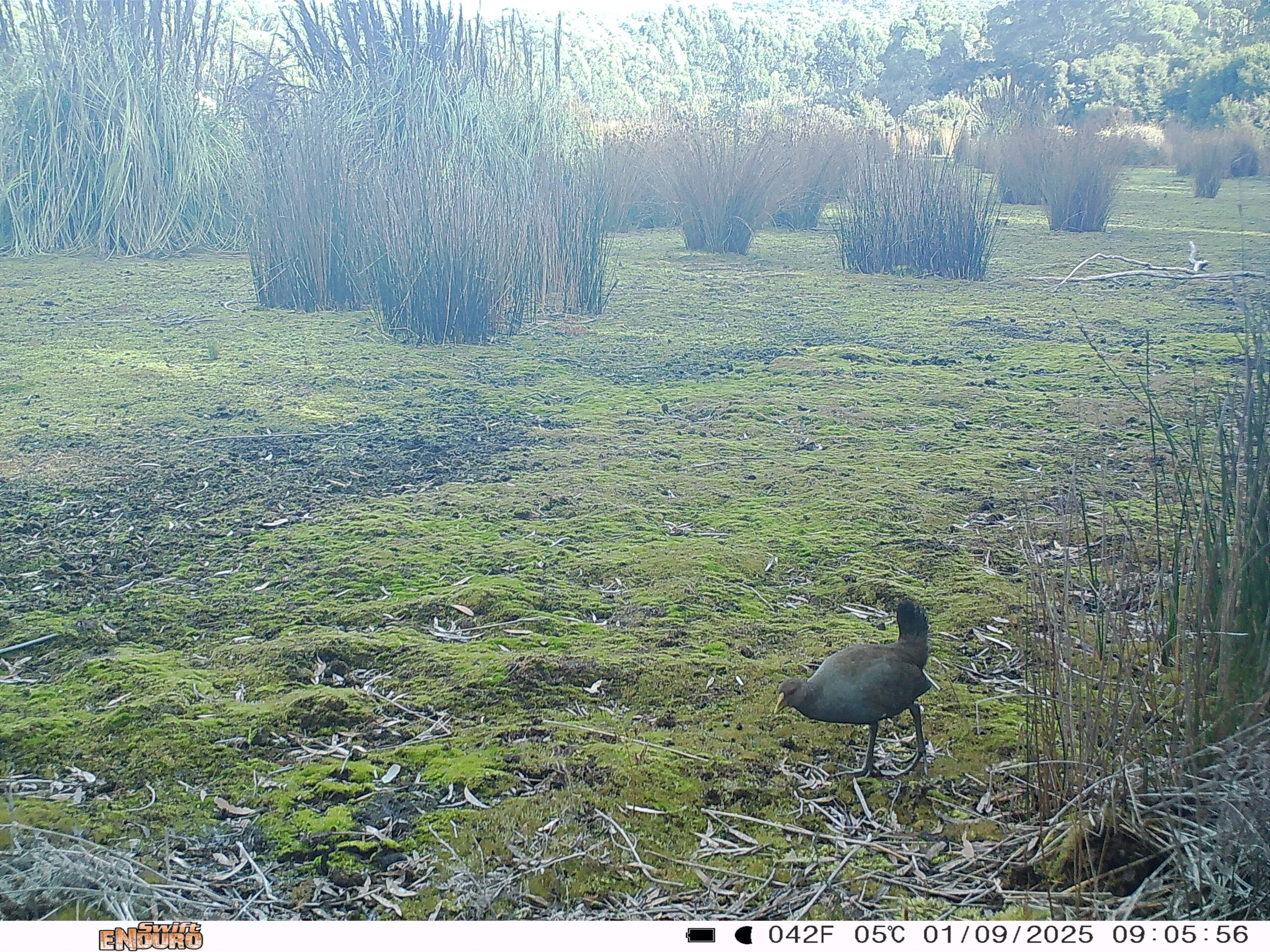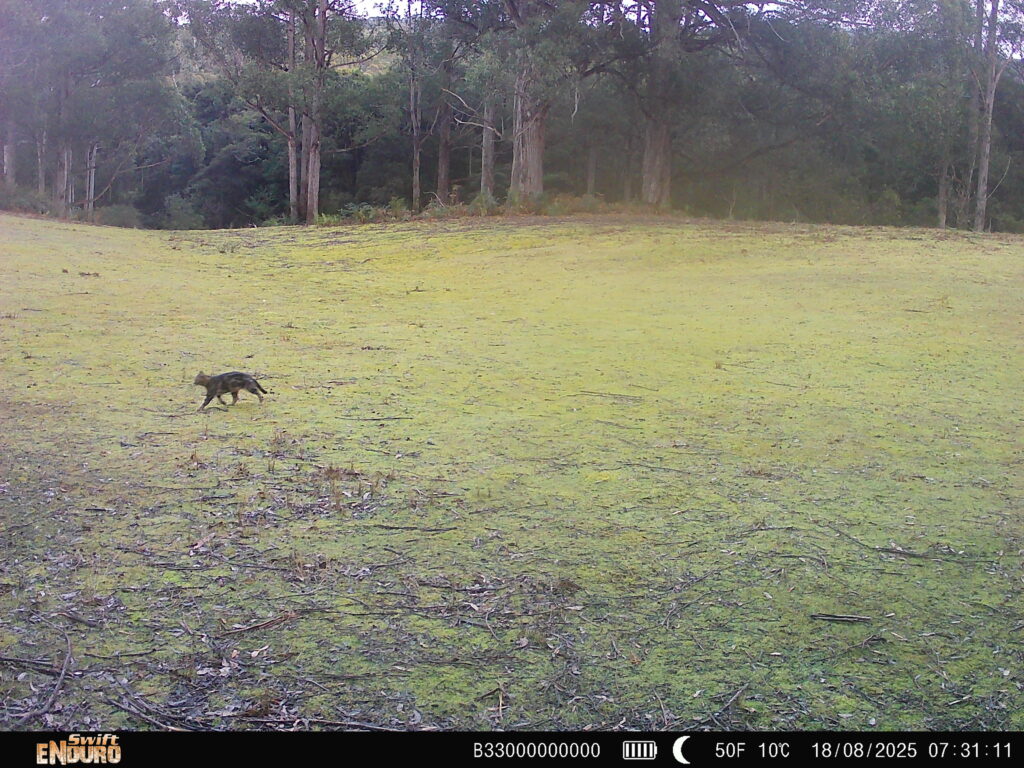Over the last month, our Biodiversity Coordinator Dr Cat Young has been back and forth to Bruny Island to take part in everything from cat management workshops to a Swift Parrot welcome party – all part of efforts to protect Bruny island’s important wildlife and landscapes as part of our Biodiverse Bruny project.
In mid-September, Cat led an NRM South workshop at Inala, inviting landholders from south Bruny to learn more about cat management on the island. Discussions ranged across legal requirements, camera trapping, the how, where and when of setting cage traps, as well as humane euthanasia principles.
Cat was joined by Professor Menna Jones from the University of Tasmania who spoke about trapping and her research, while Inala’s property manager Bori shared his on-ground experiences alongside a practical demonstration of setting a trap for the best chance of successfully trapping a cat.
In the same weekend, Cat also attended a ‘Welcome Back Swifties’ celebration. Organised by legendary local Chick Perrin, the Swift Parrot party had it all; costumes, games, a quiz (with prizes!) and lots of information on Swift Parrots. NRM South supported this event by covering hall hire and donating some books to the prize pool and it was great to see such an enthusiastic turnout.
Coincidentally Birdlife Tasmania (on behalf of Birdlife Australia), were also on the Island conducting their monthly breeding season Swift Parrot surveys. We love to help our partners where we can and Cat was able to conduct seven surveys as a small contribution to the project. This pilot project is in its second year and is an extension of surveys that are conducted along the east coast of the Australian mainland each winter. Cat reports that it’s looking a great year for Swift Parrots on Bruny which have been recorded at multiple sites across the island by survey volunteers. Anyone who wants to be involved can reach out to BirdLife Tasmania.
During a visit to Cape Queen Elizabeth with Bruny Enviro Ag Services, Cat was out checking on cat traps and cameras. While our cameras have pinpointed at least three cats roaming this area, they’re managing to evade capture so far.
Our traps did manage to lure in three curious Eastern Quolls, however, who we hope enjoyed their free snack before heading back into the undergrowth!
We are also using camera traps to survey invasive deer on Bruny Island. The deer problem is growing across Tasmania – including on Bruny Island – and while we know there are deer on South Bruny, their numbers and range are unknown. To assist the Tasmanian Parks and Wildlife Service with their peri-urban deer project we have been trying to fill in these information gaps. Cat retrieved half of the 24 cameras that have been in place on private property since May 2025 and while we have not detected any deer so far this year, the cameras spotted several feral cats alongside a host of native species. However, one deer was spotted by camera traps out at Murrayfield, which have been installed to see how wildlife is responding to areas that have recently been burned by the SETAC (South East Tasmanian Aboriginal Corporation) crew.
In amongst her packed schedule, Cat also found time to sit down with Helen Shields from ABC Evenings to chat about Forty-spotted Pardalotes and the work that we’re doing with ANU to help protect this endangered species from extinction. You can listen to her interview here (from 1:27:30).
This project is funded by The Australian Government’s Natural Heritage Trust and delivered by NRM South, a member of the Commonwealth Regional Delivery Partners Panel.
